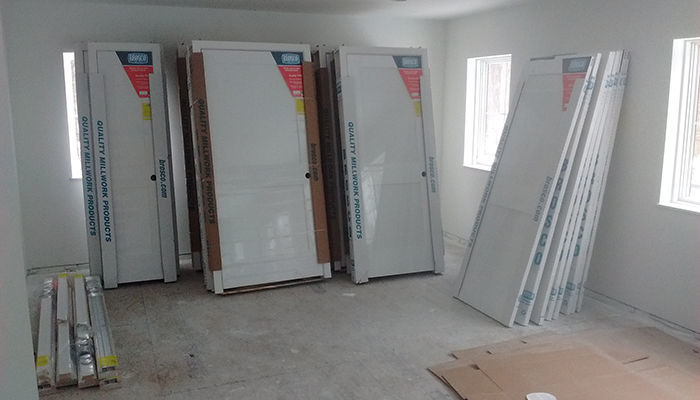Real-World Advice for Pricing Construction Jobs
Pricing a construction project requires developing a repeatable and scalable system to account for producing a precise scope of work in the real world.

Learning how to accurately price a construction project involves more than just calculating the costs of the labor, material, subcontractors, and equipment, and applying a markup to those costs. Pricing a construction project also includes developing a repeatable and scalable system to account for producing a precise scope of work in the real world.
In my book, The Paperwork Punch List, I define an estimate as: “A guess based on your experience.”
This is what your prospects are looking for when they call you and ask how much a project will cost. They are looking for an estimate. But don’t confuse the estimate (noun) with estimating (verb).
Step one: Finding the subtotal
Estimating is the first step in pricing construction work.
Estimating is the act of calculating the approximate quantities and values of the scope of work. This is where you do your takeoffs and build the scope of work. You assign your standard unit prices to the quantities in the scope of work, and determine a price for that scope of work.
Let’s call this the SUBTOTAL.
This is where many construction professionals stop. They do not perform the second step in the pricing process.
Step two: Finding the price
Pricing the estimated value of the work (SUBTOTAL) for the specific conditions of each job is the second and final step in the process. Let’s call this the PRICE.
Once you have calculated the SUBTOTAL for each scope item, you need determine the PRICE of those items.
I know this seems redundant, so let me explain. When you apply your standard unit prices to your individual scope items, you have priced exactly that – a standard unit. But that standard unit does not account for the real-world conditions in which that standard unit is installed.

For example:
Let’s say that you have 20 interior doors to install on a project. Your standard production rate to install and case both sides of an interior door is 2.5 hours per door, and your base rate is $50 per hour. Your price to install and case these 20 interior doors would be $2,500.
20 doors X 2.5 hr/door X $50/hr = $2,500
But what if I told you that 10 of the doors were solid wood, 8/0 doors on the main level and the other 10 doors were hollow core and located on the upper level of the house? How would your pricing change?
My guess is that you would charge more for the main level doors. These doors take longer to install because they are bigger and heavier. You might also charge more than your standard unit price for the doors on the upper level because they take longer to install. You have to haul these doors through the house and up the stairs.
How can you account for these differences within the scope of work?
This is where PRODUCTION FACTORS come in handy.
In this example, you may estimate that it will take 30 minutes longer to install and case the main level doors. You may estimate that it will take 15 minutes longer to scatter the upper level doors on that level.
In each of these situations you would need to include the additional time in your PRICE. You can quickly account for this by applying a PRODUCTION FACTOR of 20% to the upper level doors and a 10% factor to the main level doors.
Main Level Door Production Factor = 0.5 hr / 2.5 hr = 0.2 or a 20% increase
Upper Level Door Production Factor = 0.25 hr / 2.5 hr = 0.1 or a 10% increase
Now you have an accurate PRICE for the value of this work based on the SUBTOTAL for each line item. You can apply this method to any construction project or any construction business.
A grading contractor can establish a SUBTOTAL based on the volume of excavation and PRICE the job after applying PRODUCTION FACTORS to account for a tight site or difficult grade conditions. A general contractor can establish a SUBTOTAL based on standard unit pricing and PRICE the job after factoring in the schedule, the level of attention a particular owner may require, completeness of the plans, and general job site conditions.
Here’s what an estimating spreadsheet may look like using this two-step method:

The scope of work is listed in detail. The quantities are listed and the standard units and production rates are applied to determine the SUBTOTAL. The PRODUCTION FACTORS are applied to calculate the final price.
Summary
Pricing a construction project is a two-step process. The first step is estimating. This should be simple. Develop the scope of work and apply your standard unit rates to that scope. The second step is pricing the estimated value of the scope of work to reflect the difference between your “standard world” and the “real world.” Applying PRODUCTION FACTORS to your SUBTOTALS will take the guesswork out of your estimating system. When you eliminate the guesswork in your proposals, your confidence and your margins will increase.
…
Thanks for taking the time to read this article. I really appreciate and value your time. Please leave a comment below and let me know how you account for differences in your estimates between the perfect world and the real world.
Follow me on YouTube, Instagram @shawnvandyke, LinkedIn, Facebook, or shawnvandyke.com to learn more about how to streamline your construction business. My new book “Profit First for Contractors” will be released later this year. Follow the @ProfitFirstContractor account on Instagram for more information about the release of the book.
Fine Homebuilding Recommended Products
Fine Homebuilding receives a commission for items purchased through links on this site, including Amazon Associates and other affiliate advertising programs.

Pretty Good House

Code Check 10th Edition: An Illustrated Guide to Building a Safe House

A Field Guide to American Houses



























